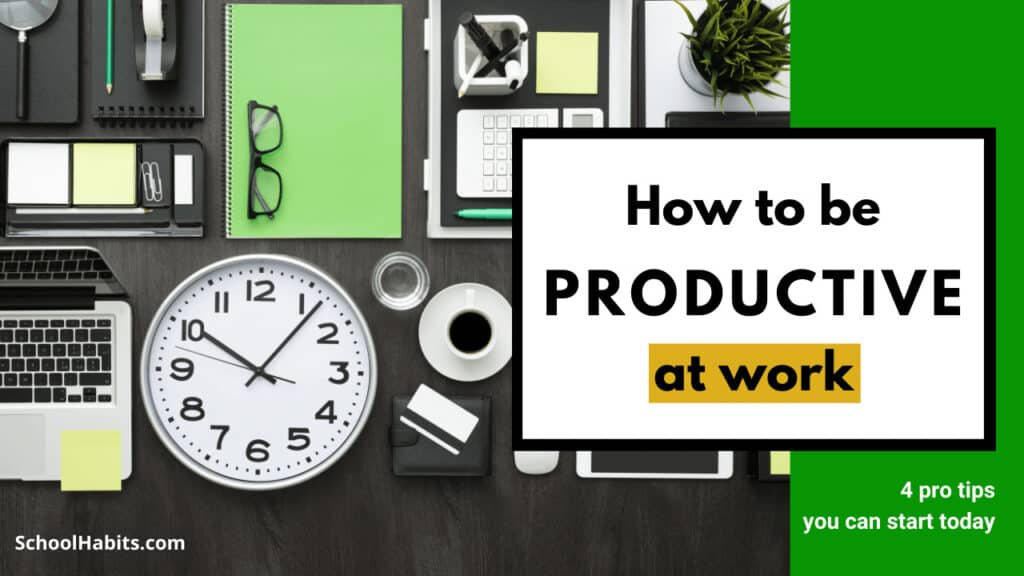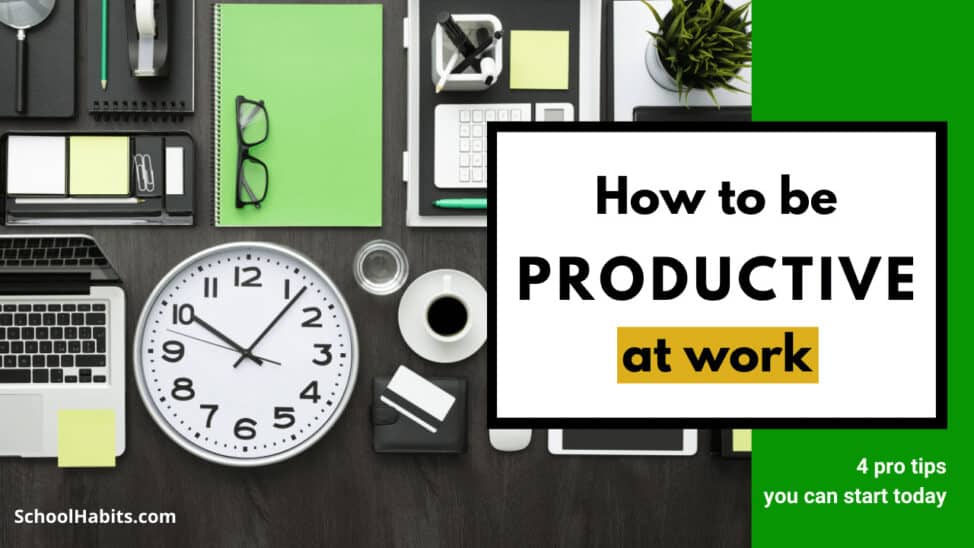By Katie Azevedo, M.Ed.

Googleing “how to be more productive at work” yields a ton of search results like this one (New York Times) and this one (Forbes) that offer the same generic tips. Many of these productivity tips are excellent – such as avoiding multitasking (here’s how), batching tasks, and taking breaks. While I completely agree with them and preach them myself, I figured I’d offer some work productivity tips that you likely won’t find anywhere else.
The productivity strategies I’m teaching you here are not fad-based, bright shiny objects (hey look at this crazy new app!) or juicy sound bites.
They are nuts-and-bolts foundational productivity strategies that straight-up work.
They are practical and simple enough that you can implement all four right away, or you can begin with one at a time. You choose.
How to be more productive at work
1. Maintain absolute and constant clarity.
Not having a clear inventory of all your projects, tasks, assignments, responsibilities, upcoming appointments, status of things you’re working on, meetings, and goals is a guaranteed path to feeling overwhelmed at work.
The solution: Take a chunk of time to do a complete inventory of all the above. Identify all your things. Figure out what you don’t know. Find what’s missing. Write dates in calendars. Put this stuff on a list. GET CLEAR.
This initial process could take an hour or a few days, depending on your situation. To maintain clarity (which you must do), do an inventory weekly, bi-weekly or monthly.
2. Use a daily inbox.
Most of us automatically connect the word “inbox” to email. That’s not what I’m referring to when I say you need a daily inbox. To be more productive at work, you should have a single location (a piece of paper) where you collect (write down) every incoming piece of information that comes your way throughout the day. This is your inbox.
Keep a single sheet of paper or a large sticky note on your desk. I often use a small 3×5 index card. This essentially becomes an external hard drive for all types of information that comes up during your workday.
Here’s what might go in your inbox:
- New emails that you can’t get to immediately, but that you don’t want to forget
- People you need to call
- Ideas that pop into your mind, whether they’re work-related or not
- Tasks you don’t want to forget
- Events or meetings you need to eventually put on your calendar
- Personal reminders
- Questions you need answers to
At the end of the day, process your inbox. This means do something with the information. Your inbox is not a task-management system, and so it’s something that you start fresh daily and close out at the end of each day.
3. Separate important and urgent tasks.
Our workday is composed of important tasks and urgent tasks, and it’s critical that you can distinguish between the two.
- Urgent tasks are time-sensitive and often connected to others’ demands or needs. These include our must-do responsibilities like sales calls, meetings, time-based reports, and other projects that are tied to a clock or calendar.
- Important tasks are not usually time-sensitive and are connected to long-term projects and goals. These are the things that have to get done “sometime,” but the timeframe is up to us.
If you only focus on urgent tasks, you will never make progress on your long-term projects. If you only focus on important tasks, you will miss critical and urgent deadlines.
You will be more productive at work if you complete a combination of urgent and important tasks every day. The golden ratio, in my experience, is 2:1 (2 urgent tasks for each important task). This way, you satisfy your critical job deadlines while always making slow and steady progress on big projects. (Need help managing multiple projects at once? Here’s my tutorial.)
4. Schedule admin blocks.
Every job in every industry comes with basic administration tasks. Even if you have an assistant or a secretary, or you simply scoop ice cream as your summer job, there are basic admin tasks that come with the territory.
We colossally underestimate the amount of time these tasks consume, particularly if we are doing them randomly and reactively throughout the week.
The key to being more productive at work is to schedule time to do these admin tasks. Batch them together and knock out a chunk of these annoying but must-do maintenance tasks at least once a week.
Every job is different, but basic admin tasks might include:
- Organizing digital files
- Organizing and / or scanning paper files
- Responding to emails and phone calls
- Updating calendars
- Clearing and cleaning workspaces and tools
- Updating computer software
- Reviewing long-term goals and quarterly plans
- Ordering supplies
Knowing how to be more productive at work has more benefits than simply “accomplishing more.” Ultimate work productivity is about seeking the clarity to know what to work on and for how long, all while managing the other distractions that seek our attention throughout the day.

